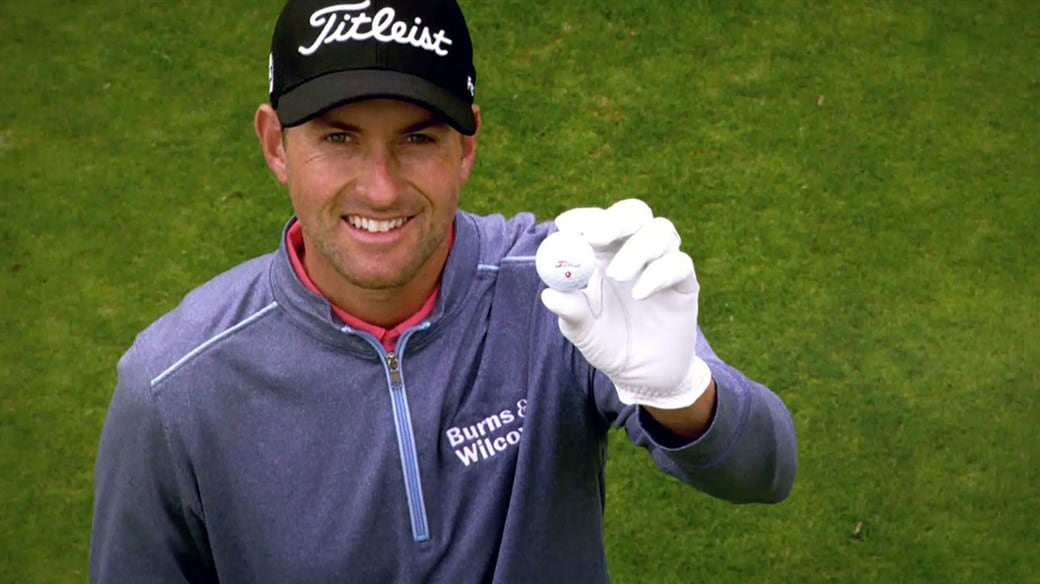 Webb Simpson - Titleist Pro V1
Webb Simpson - Titleist Pro V1
This past weekend, Webb Simpson and the new approach he has embraced were both validated. For over a year he had committed to the idea that if he paid closer attention to all the small details, the larger vision he had for his game would surely come into focus. And with golf's wildest crowd standing witness, the pieces all fell into place, as Webb's dedication paid off in the form of a playoff victory at the Waste Management Phoenix Open. It marked the sixth PGA TOUR title of his career.
"I was just a little bit tired of being inconsistent," Webb said. "So I started looking at the weaknesses and really learning from golf tournaments, whether I finished second, or 30th, or missed the cut. I made my focus 'Step By Step'. I even had Aaron Dill stamp it on my wedges – it's just a reminder for me to take care of the little things and the big things will take care of themselves."
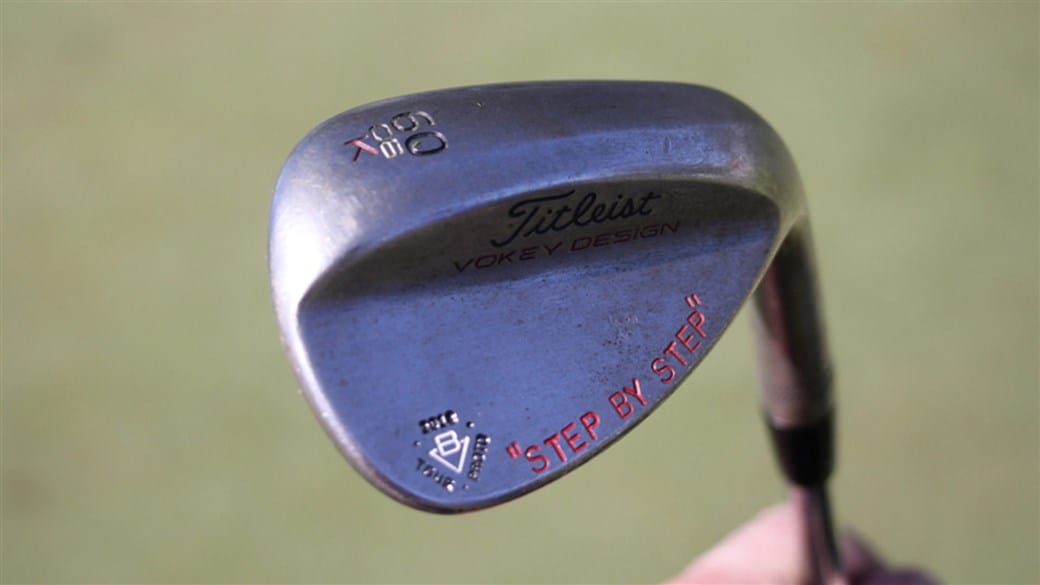 Webb's prototype Vokey 60.06K lob wedge, stamped with a reminder to pay close attention to detail.
Webb's prototype Vokey 60.06K lob wedge, stamped with a reminder to pay close attention to detail.
To be fair, Webb could tell that his game was on the upswing well before his performance at TPC Scottsdale. The win, his first since THE PLAYERS in 2018, came on the heels of a long stretch of more consistent play. Beginning in mid-summer last year, Webb recorded four runner-up finishes, the most recent coming at the RSM Classic, the last event on the 2019 calendar. There was strong evidence that his former strengths – precision, accuracy and distance control – were returning.
Among the many re-examined details that factored into the resurgence of Webb's game, one of the most important was perhaps the most elementary – his golf ball. Last season, Webb switched to a Pro V1 model just before The Masters, where he tied for 5th. It was his best finish ever at Augusta and proof that the time he spent in testing had paid off. As Webb shares in the discussion below, nowhere is attention to detail more important than in choosing which ball you play.
•••
The Most Important Aspects of Golf Ball Performance
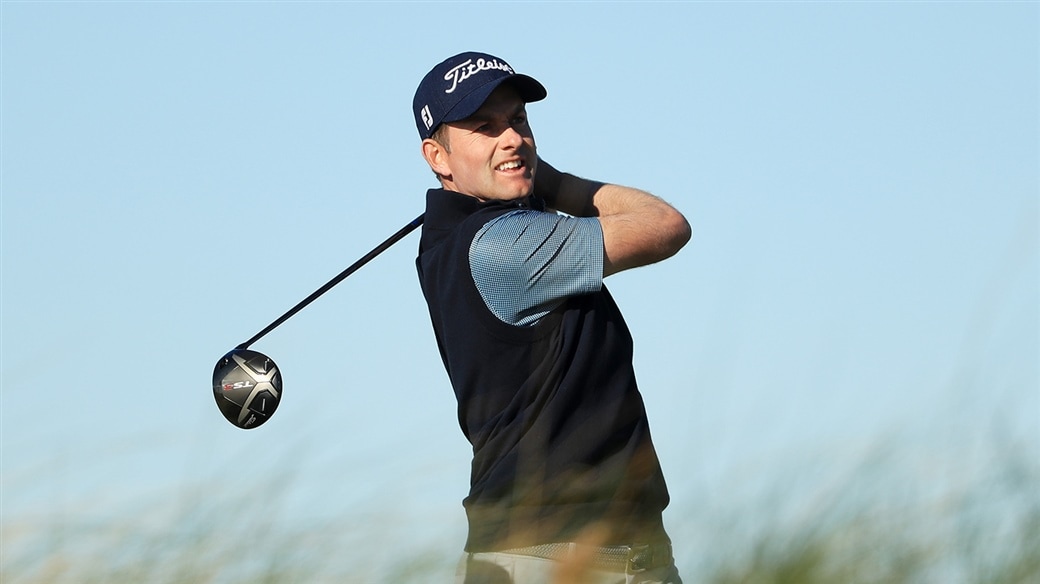 Off the tee, Webb has solved the spin equation with his Pro V1 golf ball and a Titleist TS3 (10.5°) driver.
Off the tee, Webb has solved the spin equation with his Pro V1 golf ball and a Titleist TS3 (10.5°) driver.
TEAM TITLEIST: Webb, when you took another look at your golf ball last season, did you go through a formal golf ball fitting process?
WEBB SIMPSON: Absolutely. Working on tour with Fordie (Titleist Tour Consultant for Golf Ball R&D, Fordie Pitts) and the whole Titleist team, I spent a number of weeks and went through pretty much my whole bag. I pay particular attention to spin rate. I love comparing how this ball spins with the wedges compared to this ball. And then progressing to a 7-iron, maybe, then a hybrid or a 5-wood and then pick a driver. I don't think any one club is more important than the rest, but if I had to give kind of the priority, I would say the driver for spin.
TT: Why is spin so important to you?
WS: Spin is in this place, I call it living in the tension. I want to live in the tension with spin where I'm getting enough spin but not too much. I've played certain variations of Titleist balls over the years that have spun a little too much for me and not spun enough. You get to know what that feels like. And so finding that perfect balance, like I did in 2019 is a great feeling. But it does take time and you just gotta be patient with it.
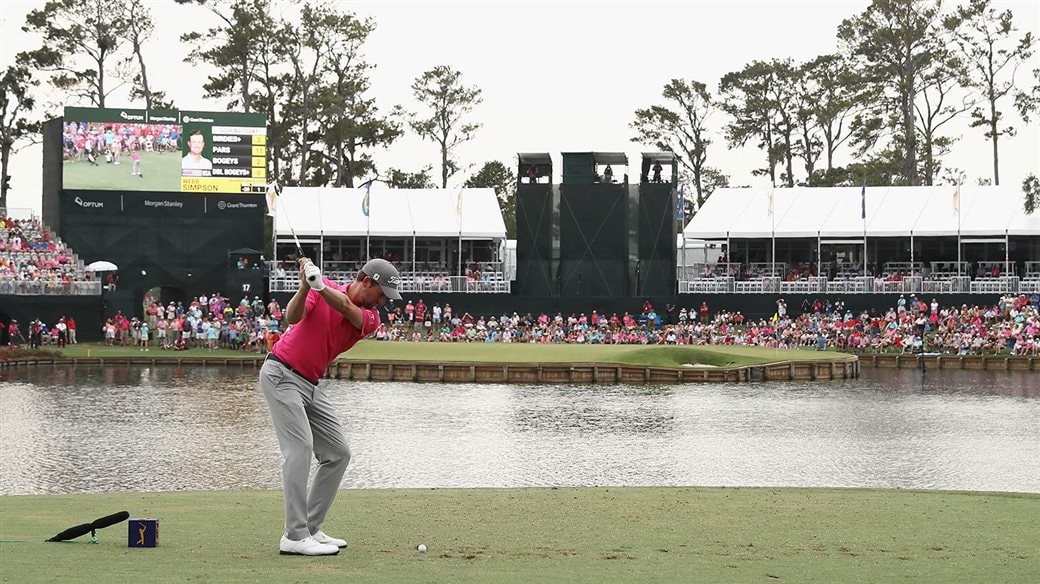 Webb tied the course record of 63 at TPC Sawgrass en route to his 2018 victory at The PLAYERS Championship. "Once I got to 17 and the ball was on the green," Webb said, "internally I was celebrating."
Webb tied the course record of 63 at TPC Sawgrass en route to his 2018 victory at The PLAYERS Championship. "Once I got to 17 and the ball was on the green," Webb said, "internally I was celebrating."
TT: What happens if you play a ball that spins too much?
WS: So everyone knows TPC Sawgrass Number 17. We'll take that for example. You get there and it's blowing 18 miles an hour into you and 2 mph out of the right. And the last thing you want to be thinking is, 'how much is my ball gonna spin here'? If the ball's too spinny and you hit it off the bottom groove or you mishit it a little, it's going to spin more. If the ball has too much spin to start with, you're going to come up short. And wet.
And if we want to reverse that, if we have a ball that doesn't spin, you're into the wind 18 miles an hour and you hammer it and hit it perfectly flush, that wind's not even there. So you're over the green and wet. That's a hole I think about a lot when I'm thinking about spin.
And I also think about Number 12 at Augusta because the wind's always swirling. It's hard to identify exactly where it's coming from and distance control is really tricky.
This is actually a fun story – this year on Masters Sunday, I'm playing in the second to last group. Two guys I play with hit it in the water. Two guys playing in the final group hit it in the water. But I know that if I flight my Pro V1 a certain way, I know it's not going to go too far and it's not going to spin too much and I hit it to 20 feet. And that was where I was really excited internally as a player with my ball because that's the highest pressure situation you can be in where distance, control and spin matters most.
TT: If you put yourself in the shoes of those players who did hit it in the water in those situations, what does that do to your confidence?
WS: Oh, it gets in your head, for sure. Because like I said earlier, the last thing you want to be doing on a tough hole with water or trouble is thinking, 'what is my golf ball going to do here'? Is it going to spin, is it going to fall out of the air?
We play with guys all the time. They'll flush it from the middle of the fairway – and these are the best players in the world – the pin's 16 yards on the green and they'll land short of the green. With a 7-iron. And they'll look at their caddie like, 'what happened?'. And me and my caddie, we know what happened. They're hitting the wrong golf ball. It happens all the time, especially when the wind starts blowing. And I won't name names, but there are certain balls out there that are known to really struggle.
But I've been playing Pro V1 for a while now. And that's never in my mind. I never have to guess or think about what this ball is going to do. Which is a really good feeling.
Webb's Golf Ball Testing Process
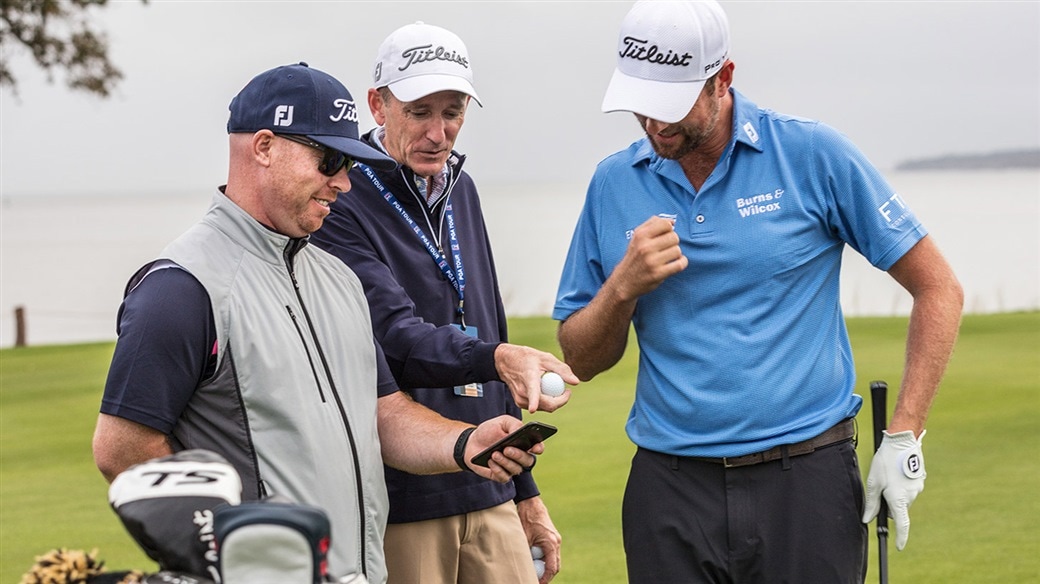 Titleist tour reps JJ Van Weezenbeeck (left) and Fordie Pitts (center) review spin and launch numbers during golf ball testing with Webb in 2019.
Titleist tour reps JJ Van Weezenbeeck (left) and Fordie Pitts (center) review spin and launch numbers during golf ball testing with Webb in 2019.
TT: When you test golf ball models, are you looking at launch monitor numbers or are you comparing balls out on the golf course?
WS: Both. We usually start on the range and we just kind of work through the bag and see what the spin looks like and kind of, I guess, rule out a couple things before we go on the golf course.
And ideally, I like to take golf balls out on the golf course on windy days. Because then you're able to see how the ball truly is reacting. Because on the range, we all can kind of dial it in with the wind. We start making it do what it's supposed to do, whereas on the course, the holes all take different routes, and you have to play all the different wind directions. I think that's the best way to do it.
TT: You said that you'll "rule out a couple things." Can you explain?
WS: Yeah, so if I'm testing a ball and I'm hitting a few drivers in a row that I think for me are perfectly hit and the spin's too low or too high, I'm going to rule that ball out immediately. I'm not going to change my swing to make the ball fit. I need the ball to fit what I'm already doing well.
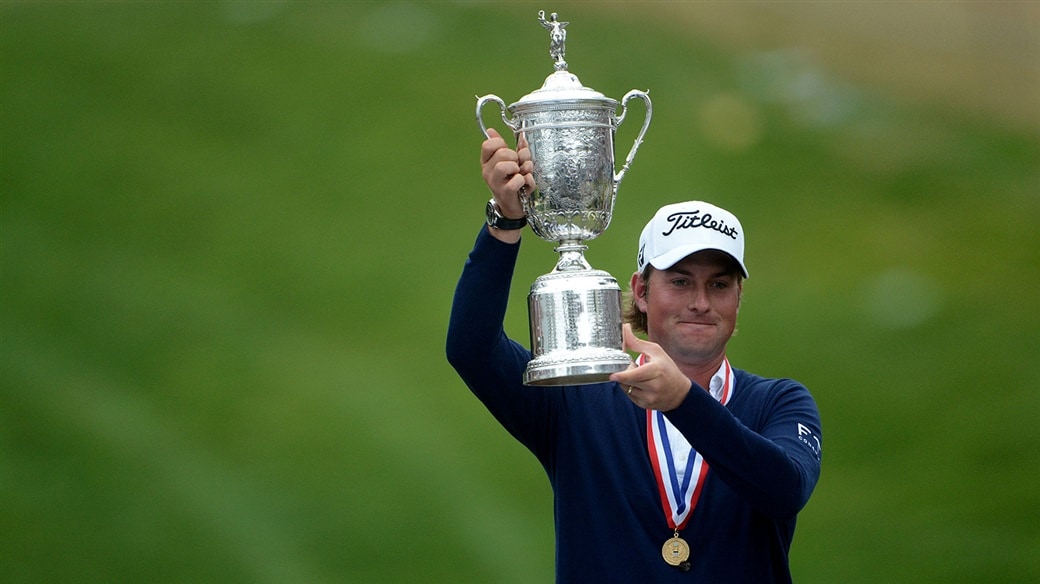 Webb at the Olympic Club in 2012, where he captured his first major title at the U.S. Open.
Webb at the Olympic Club in 2012, where he captured his first major title at the U.S. Open.
TT: How much does distance factor into your equation?
WS: For me, distance isn't that important when I'm trying to choose a golf ball because I'd rather sacrifice a little distance for a little more feel. I think you're going to score more around the greens controlling shots versus just pounding it as far as you can hit it. And I feel like the Pro V1 I'm in, it's going to go as far for me as any other ball.
TT: Speaking about short game, you have one of the more unique setups on tour with a lot of long game clubs and just two Vokey wedges – a 54.14F sand wedge and a prototype 60.06K lob. Why does that work for you?
WS: I put in a 4-hybrid in 2016 and I put it in because I couldn't get enough spin with my long irons in order to land the ball softly on the greens. And as the game is trending to playing longer and longer courses, I'm hitting 4-irons and 3-irons a lot. And so I thought, I'm willing to give up a wedge for another hybrid so I can have more height into these par-4s and even short par-5s.
And I feel like if I have these two wedges, it's on me. I can learn to hit different distances with these wedges, but I think it'll be counter-intuitive for me to try to hit these 3-irons and 4-irons higher. I think it will mess up my golf swing. So I said, why don't I just stick with my normal swing and put in hybrids.
I actually asked one of the staff guys if they had any 5-hybrids and they laughed, thinking I was joking, but I was being serious. Because they're easier to hit out of the rough, you can hit them higher. I put a steel shaft in my 4-hybrid so it feels more like an actual four iron versus a hybrid. I love them.
If you're an amateur golfer, unless your spin characteristics are really unique, you should have hybrids. Take 3-iron, 4-iron out.
(Click here for for a full listing of the Titleist clubs in Webb's bag.)
Performance in Every Aspect of the Game
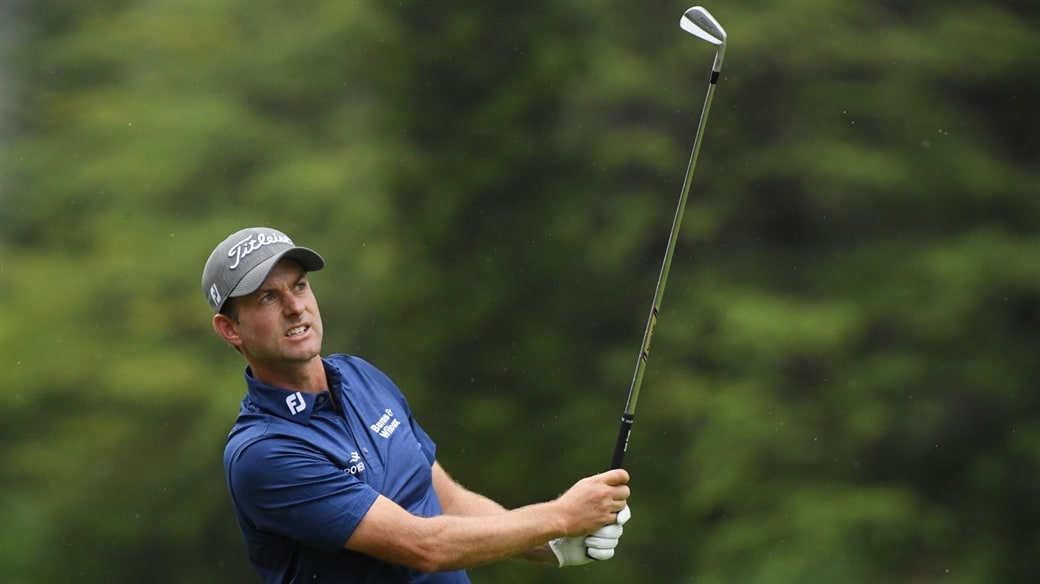 Webb flights a shot down using his Titleist 620 MB 7-iron at the 2019 RSM Classic.
Webb flights a shot down using his Titleist 620 MB 7-iron at the 2019 RSM Classic.
TT: Do you like seeing the ball fly through a specific window? Or are you okay hitting it low, high, as long as the spin numbers are where you need them?
WS: I do like a window. When I hit a shot, I almost want to be able to close my eyes and tell you where it is. That said, though, I definitely want the ability to hit it low. I've tested a ball or two before where I felt like into the wind, no matter what I did, I couldn't keep it low enough. Which for me, flighting the ball is really important. Some guys don't flight it at all, they just hit the same trajectory every shot. But if I can't flight it the way I want to, I won't use that golf ball.
TT: How about working the ball, left to right and right to left?
WS: Yeah, definitely. I would say I curve it as much as about anyone on tour besides Bubba Watson. I love seeing the ball curve. I feel like hitting it right to left almost gives me a six and a half iron, a seven and a half iron, an eight and a half iron. If I really want to turn the ball over, I can add yardage.
And then to be successful consistently on tour, I found that you have to be able to work it both ways. I'm not naturally a cutter, but I've learned that most right pins require a cut shot. And that's something that's developed the last couple of years and I've gotten better with it. It certainly feels good being in the fairway knowing whatever side the pin is on, I'm able to get at it starting at the fat side of the green.
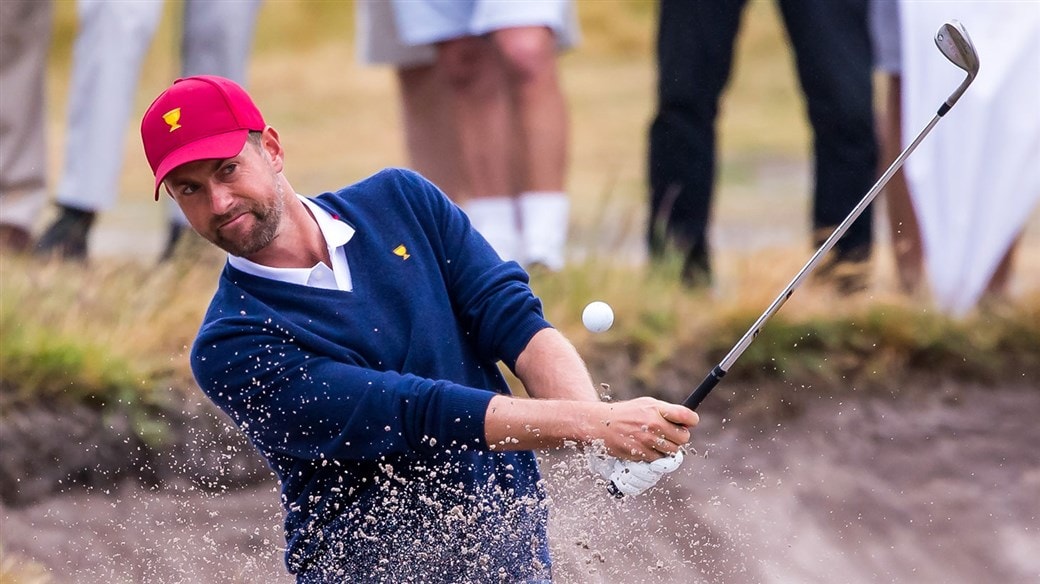 Webb blasts his Pro V1 out of a Royal Melbourne bunker during action at the 2019 Presidents Cup.
Webb blasts his Pro V1 out of a Royal Melbourne bunker during action at the 2019 Presidents Cup.
TT: If you could, Webb, talk us through your work around the green in testing. What are you looking for?
WS: I'm looking at a whole variety of shots. It's interesting how conditions can change over the course of just one tournament. One round, the golf course is super soft, so you're more aggressive. You play lower ball flight, really hitting it hard so the ball takes one little hop and spins. Whereas the next day, it firms up and you have to hit with more loft, and let the ball roll a lot. At the PGA Tour level, you have to be able to kind of do whatever the shot requires. Typically, I'm a lower flight, faster ball speed, more spin type of chipper. But to be successful at certain courses, you have to be able to hit that kind of slower, softer shot. So in testing, you need to get out in as many different conditions as possible to make sure your ball can cover all those shots.
Pro V1 Versus the Competition
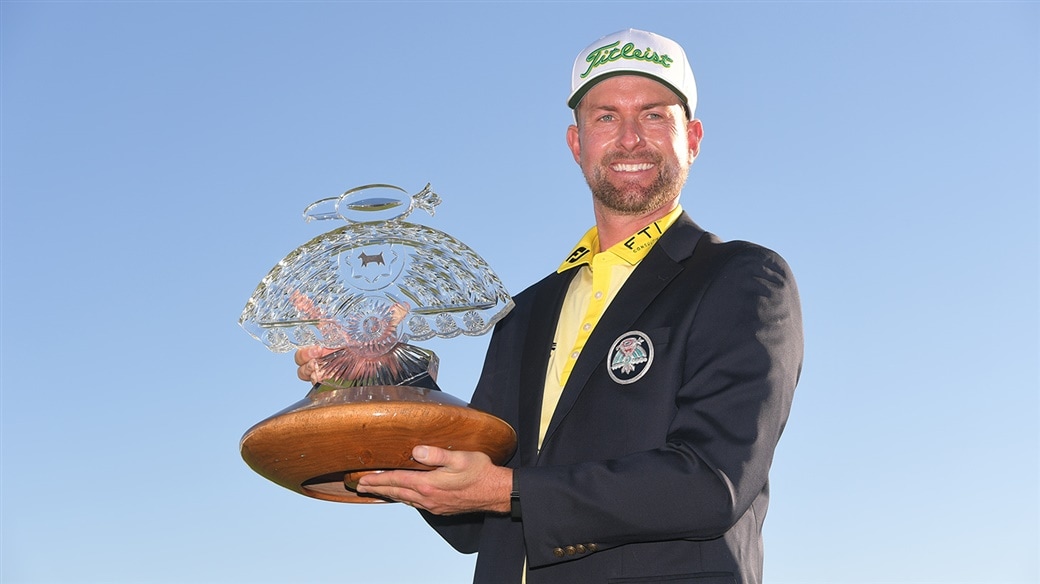 Back in the Winner's Circle - Webb raises the trophy at the 2020 WM Phoenix Open.
Back in the Winner's Circle - Webb raises the trophy at the 2020 WM Phoenix Open.
TT: Have you ever compared your Pro V1 to competitor golf balls?
WS: Well, sometimes, on the chipping green if I'm just working on technique, I'll hit whatever. It's fun to kind of test. Some of them feel okay, some of them don't. But yeah, I have my opinions on certain balls. There's a couple balls I'll never chip with because they feel like I'm chipping with a rock. But yeah, I think it's good to do that occasionally because it gives me more confidence in my ball.
TT: Aside from the feel, have you seen a performance difference? Will competitor balls react differently on the green than what your Pro V1 will do?
WS: Yes. I think my ball is more consistent. In fact, I know it is. I know that I could hit a chip shot and never look at it and I can tell you what it will do spin-wise. I don't think other golf balls have that edge like the Pro V1 does in terms of coming off the same, however it's been hit, every time.
TT: Over the years, as you've seen different iterations of Pro V1 and Pro V1x come and go, have you seen any improvement in terms of the quality of shot you'll get on a mishit?
WS: It's funny you say that. Reminds me, I played that 2011 Pro V1x for a while. And I loved that golf ball. Had one of my best years on tour with it. But every once in a while, we would hit a shot and it would just go really far. But we always said, "Hey, this ball is so good, we'll deal with it. It's fine."
But I've seen the dispersion get a lot tighter. Every version of the Pro V1 and Pro V1x. I don't have any mysteries anymore, where you're scratching your head, 'why did that ball go so far? Why did it go short?' That doesn't happen, which is really cool.
Advice for Amateurs on Golf Ball Testing
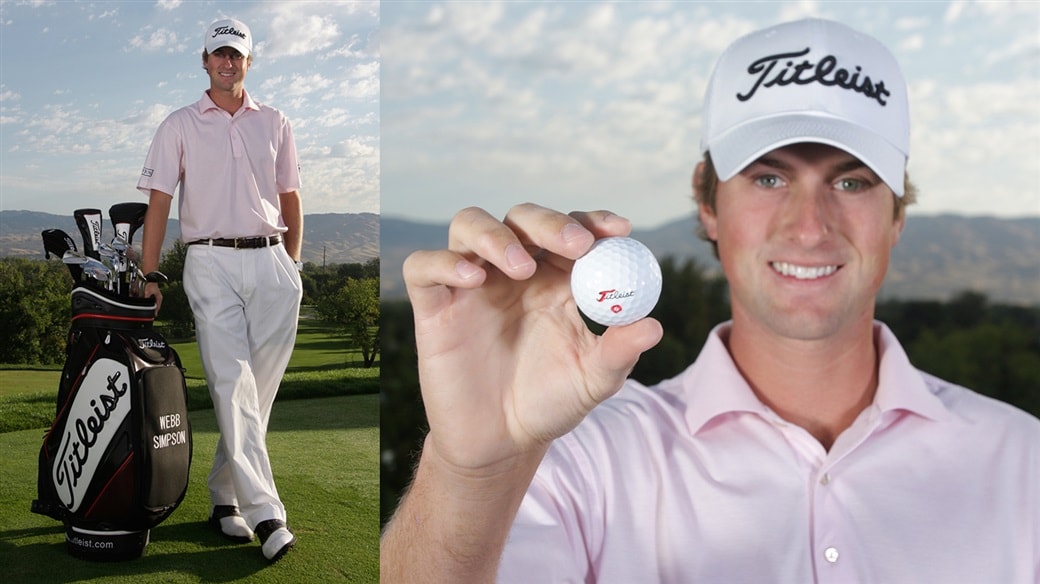 Since the day he turned pro in 2008, Webb has trusted a Titleist golf ball and Titleist golf clubs, tee-to-green.
Since the day he turned pro in 2008, Webb has trusted a Titleist golf ball and Titleist golf clubs, tee-to-green.
TT: What advice would you give to amateur players when it comes to the golf balls they play?
WS: The first thing that amateurs need to understand is that, with the right ball, you can take your 90 to an 86. Or your 80 to a 78. I think it really does make that big a difference. Because you get a guy, let's say he has low spin with his driver and he's hitting the wrong golf ball. Well if he gets the correct spin, the ball stays in the air and he might hit his driver 15 yards further.
And in the short game, I'm asked all the time, "How'd you spin that flop shot? How do you spin it out of the bunker?" They want to know how to do it, but those shots aren't easy, especially for amateurs. They don't realize that they're already at a disadvantage because they're not working on their game every day. And so they need all the help they can get. Why not get all the help you can get from the ball?
TT: You've had a chance to tour our Ball Plant 3 facility in New Bedford, MA. What did you take away from your visit?
WS: Yeah, that was a great experience. I had no idea how much went into the process. And it was great to meet the people who are making what you rely on week in, week out for your job. Just to see the faces behind the products I'm getting in my locker every week. I walked away feeling even more confident knowing that every station, every person's job was super important to them and they were going to do it to the best of their ability.
TT: Final question - do you have any emotional connection to the Titleist script? Does it give you confidence or a sense of security when you look down and you see that logo?
WS: Yeah, I've been playing golf since I was eight years old. When you ask me to think about the Titleist script I guess what it brings me back to is Christmas. Every Christmas, I would get a dozen Titleist Pro V1s. Or, starting out, it would have been Tour Balatas then the Tour Prestige and then onto the Pro V1. But that was a beautiful thing to see, that gold box under the tree. So yeah, a nice emotional connection, for sure.
•••
Webb, congratulations on your win in Phoenix, and thanks very much for sharing your golf ball insights with us!
#TeamTitleist